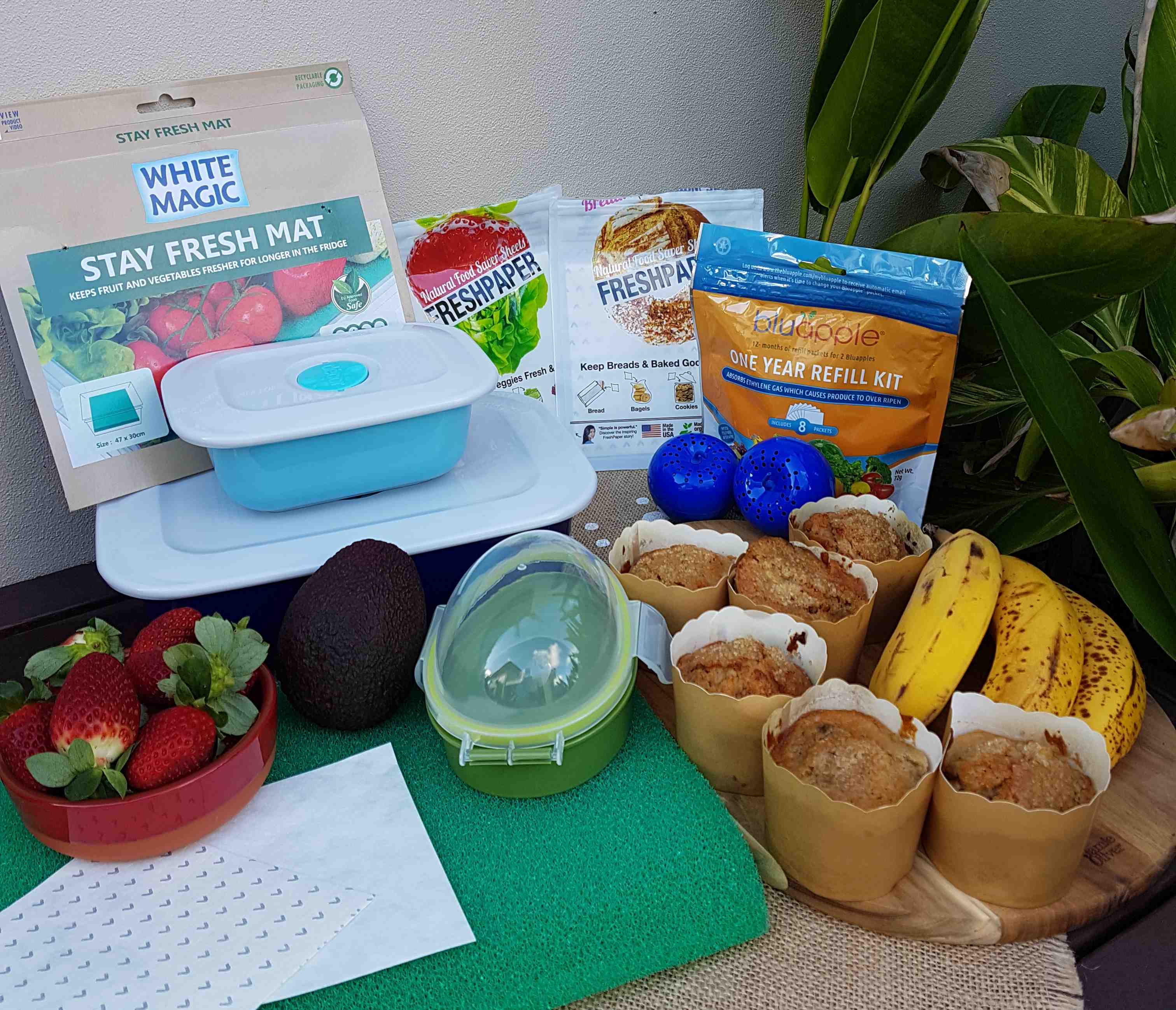 Are you guilty of throwing out spoiled fruit and vegetables from the crisper after you have done your weekly grocery shop; binning yoghurts past their use-by date; finding three sour creams at the back of the fridge that you buy just in case; and finding that week-old leftover meat that you were supposed to make into another meal? If this also happens in your kitchen, you and I are not alone – Australians are throwing out one in five bags of foods that we buy, and unfortunately this food waste ends up in landfill producing a damaging greenhouse gas, methane.
Are you guilty of throwing out spoiled fruit and vegetables from the crisper after you have done your weekly grocery shop; binning yoghurts past their use-by date; finding three sour creams at the back of the fridge that you buy just in case; and finding that week-old leftover meat that you were supposed to make into another meal? If this also happens in your kitchen, you and I are not alone – Australians are throwing out one in five bags of foods that we buy, and unfortunately this food waste ends up in landfill producing a damaging greenhouse gas, methane.
According to research last year, Australians throw out $9.6 billion of edible food each year, which equates to $1050 – $3800 per household per year. It is also a waste of valuable resources that go in to producing the food we buy. City livers and Generation Y are the worst food waste offenders. The most common reasons for food waste in the home are – that we buy too much food, we don’t check the fridge or pantry before we shop and we don’t know how to use leftovers. The top five wasted foods in households are vegetables, fruit, bread, bagged salads and leftovers, according to OzHarvest.
We can all do our part in reducing food waste in our home, and in turn save money, eat more nourishing meals and help the environment. The philosophy that Oz Harvest promotes is simply “buy what you need & eat what you buy” and Brisbane City Council’s Love Food Hate Waste campaign has some excellent tips.
Buy what you Need
Plan your meals for the week ahead and do a quick audit of your fridge and pantry. Think of your usual family’s activities and habits, meals consumed outside the home and factor this into your meal planning as well. Make a shopping list and stick to it. Always search for the best use-by date on perishable items and refrain from impulse bulk buys of these foods. Grow your own herb and vegetable garden/pots to have a ready supply of fresh herbs and some vegetables.
Eat what you Buy
After your grocery shop, rotate your food to bring foods with a closer use-by date to the front of the fridge. Some families have an EAT ME container at the front of the fridge with foods that need to be eaten first. Store your foods correctly to prevent spoilage, and try some fresh food saver products for your crisper. Cook your very perishable foods (e.g. salads, seafood, fresh meats) at the start of the week. Freeze any foods that are not used in vacuum sealed bags or containers. Cook an end-of-week soup, casserole, roasted vegetables or stir-fry to use up any vegetables left in the crisper. Use your over-ripe fruits in muffins, smoothies or puree them to freeze. Love your leftovers, get creative and invent a new dish with ingredients that you already have.
| Check before your throw out ……
Use-by date – tells you how long you can safely consume a food. Food should not be eaten past its use-by date. Best-before date – a food will remain fresh and in its high quality until this date. Food should be safe to eat after this time, but the quality may be less. Baked-on date – for bakery products if its shelf life is less than seven days No date marking – foods with a shelf life of two years or longer do not need to have a best before date. |
New Food Saver Products on the Market that WORK!
Fresh Paper is a simple piece of paper with organic spices that are naturally anti-fungal and anti-bacterial, inhibiting the bacterial and fungal growth that breaks doo perishable food. Simply place the piece of paper in your crisper, berry carton, bag of salad greens or fruit bowl. There is also a Fresh Paper product for bread and bakery products. Sheets stay active for a month and cost $9.95 for a pack of 4.
BluApple will keep your fruits and vegetables fresher longer. A simple, organic, nontoxic and recyclable device for the home that extends the storage life of produce up to three times longer. It absorbs ethylene gas which causes produce to over ripen. The refill packets last for 3 months and cost $25 for a one year supply.
Stay Fresh Mat preserves the freshness of fruits and vegetables in the crisper. The structure within the mat allows the air to circulate under the produce to prevent spoilage. It can be cut to fit into any crisper and is also machine washable. A sheet costs $8.95.
available at Woolworths, Matchbox, Howard’s Storage

